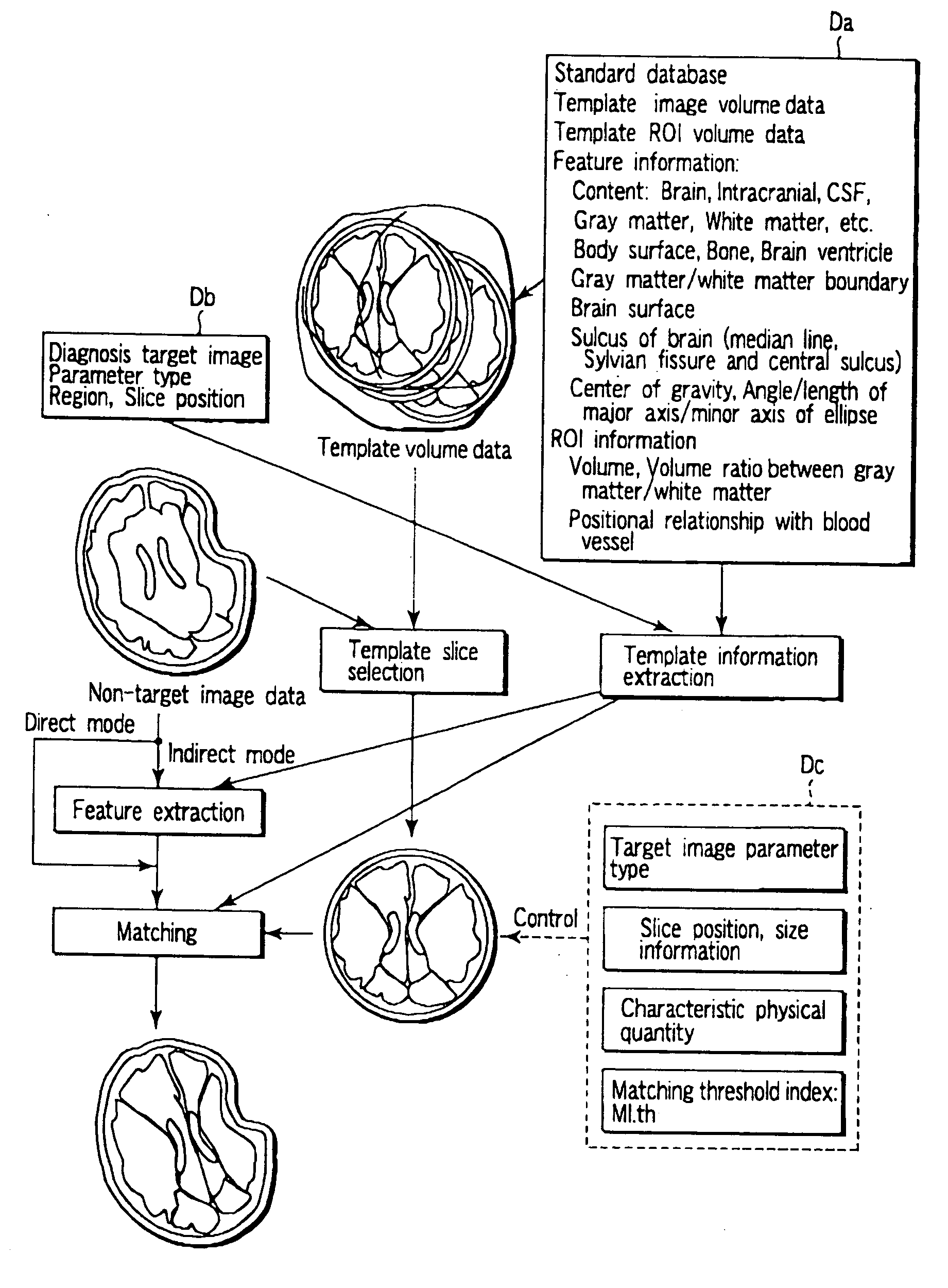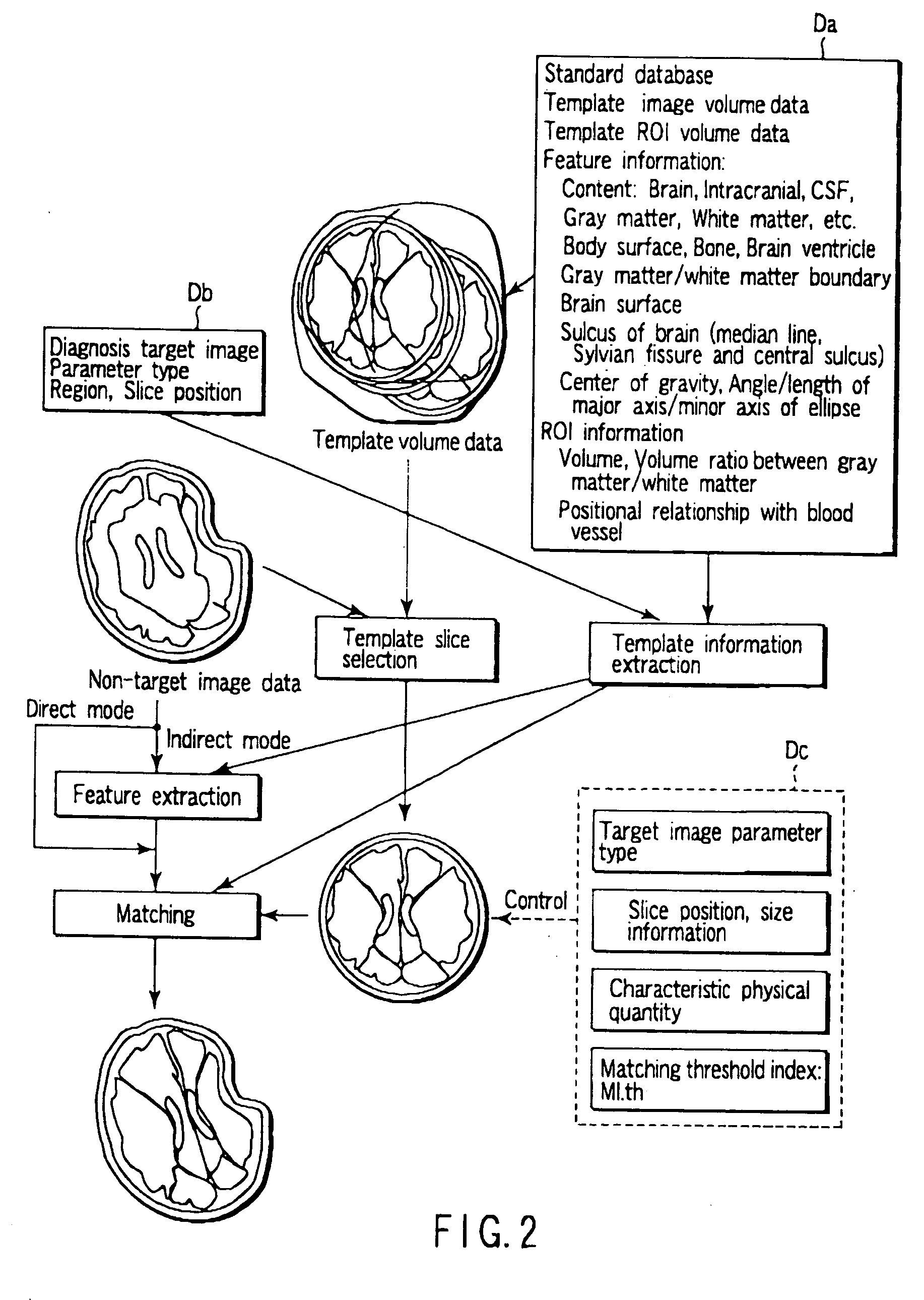Medical image processing apparatus
a technology of medical image and processing apparatus, applied in the field of medical image processing apparatus, can solve the problems of difficult to make data correspond to clinical diagnoses, image warp error may occur, and insufficient use of conventional techniques based on image warp, so as to achieve the effect of easy setting of roi
- Summary
- Abstract
- Description
- Claims
- Application Information
AI Technical Summary
Benefits of technology
Problems solved by technology
Method used
Image
Examples
first embodiment
[0024]FIG. 1 is a block diagram showing the arrangement of a medical image processing apparatus 10 according to this embodiment. As shown in FIG. 1, the medical image processing apparatus 10 comprises a control unit 11, feature information extraction unit 13, matching processing unit 15, display unit 17, transmission / reception unit 18, input unit 19, image storage unit 21, template ROI storage unit 23, and positional relationship storage unit 25.
[0025] The control unit 11 performs overall control on the operation of the medical image processing apparatus 10. The control unit 11 performs control on an ROI warp matching function and the like (to be described later).
[0026] The feature information extraction unit 13 acquires feature information concerning various kinds of images such as a template ROI, standardized image, and diagnosis target image. In this case, for example, the following are diagnosis target images, standardized mage, and feature information concerning images.
[0027...
second embodiment
[0063] In the first embodiment, if diagnosis target image data is three-dimensional data which is small in slice thickness to some extent (5 mm or less) and covers the entire brain or organ, matching can be performed with high accuracy even in the slice axis direction when matching is performed up to three-dimensional matching. This makes it possible for the firs: embodiment to satisfactorily make diagnosis image data coincide with a template ROI.
[0064] If, however, diagnosis target image data is two-dimensional mage data limited to the slice axis direction, planning is made in advance to set a slice position at a desired position in imaging operation. However, diagnosis target image data and template ROI data may shift from each other in the slice axis direction. In this case, the “slice axis direction” is a direction orthogonal to a diagnosis target image and a corresponding template ROI as described in the first embodiment and parallel to the body axis direction. More specifical...
PUM
 Login to View More
Login to View More Abstract
Description
Claims
Application Information
 Login to View More
Login to View More - Generate Ideas
- Intellectual Property
- Life Sciences
- Materials
- Tech Scout
- Unparalleled Data Quality
- Higher Quality Content
- 60% Fewer Hallucinations
Browse by: Latest US Patents, China's latest patents, Technical Efficacy Thesaurus, Application Domain, Technology Topic, Popular Technical Reports.
© 2025 PatSnap. All rights reserved.Legal|Privacy policy|Modern Slavery Act Transparency Statement|Sitemap|About US| Contact US: help@patsnap.com



